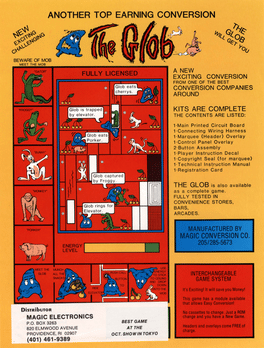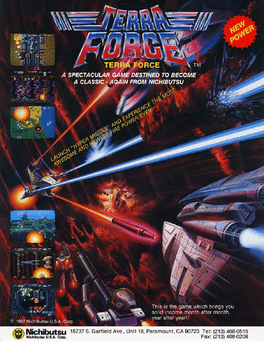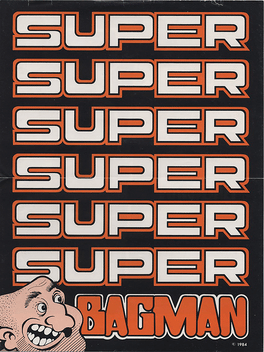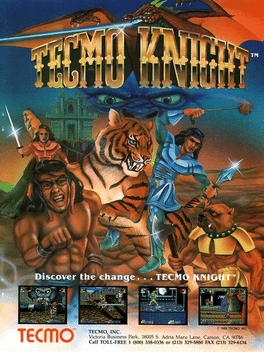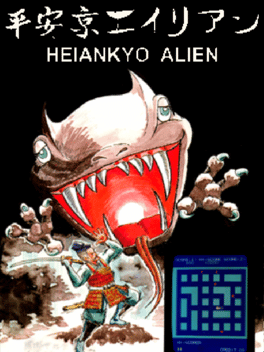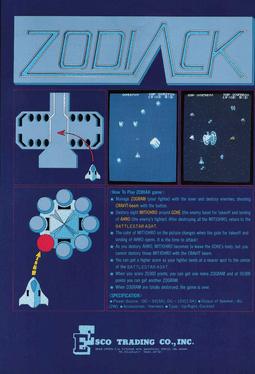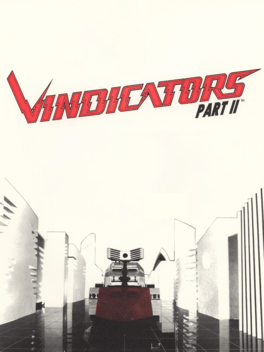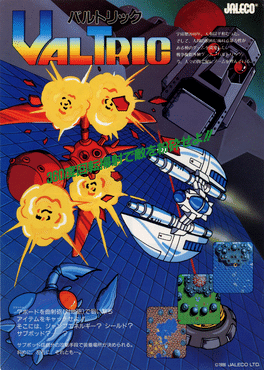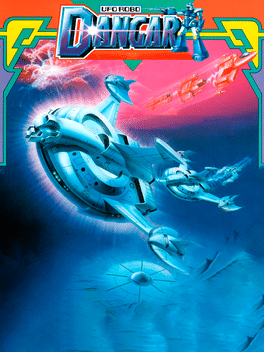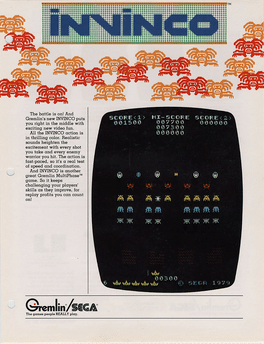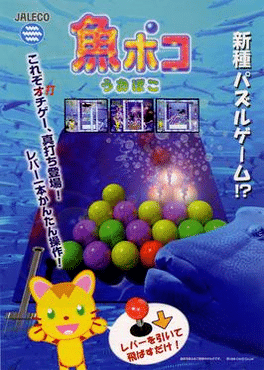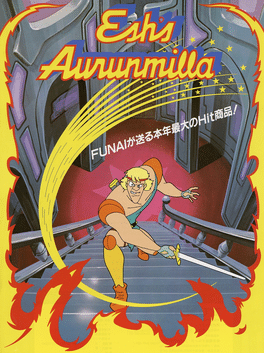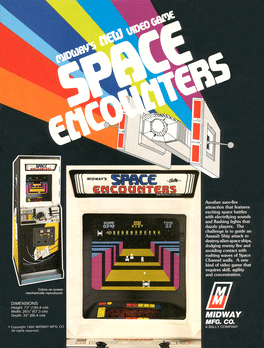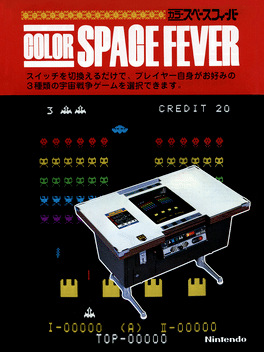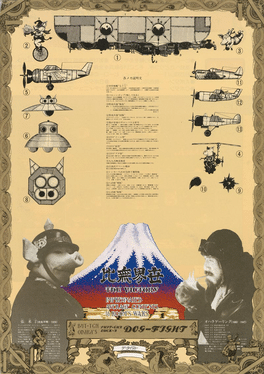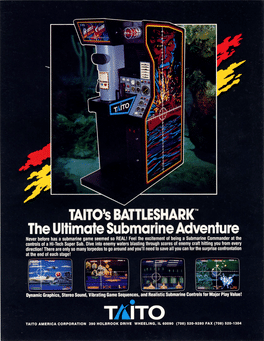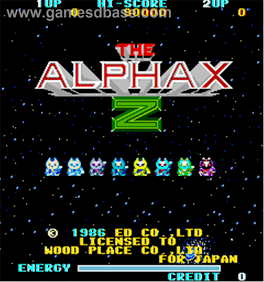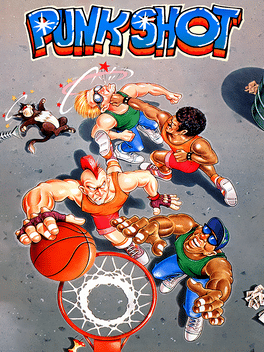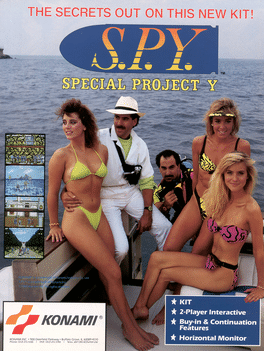Most Popular Arcade Games - Page 117
-
The Glob
1983
-
Terra Force
1987
-
Super Bagman
1984
Super Bagman
1984
The objective of the game is to maneuver the bagman through various mine shafts, picking up money bags and placing them in a wheelbarrow at the surface of the mine. The player must avoid pursuing guards, moving ore carts, and descending elevators. The player may temporarily stun the guards by striking them with a pickaxe or by dropping money bags on them when they are below the player on the same ladder. The player may move between the three screens which make up the level via shafts and on the surface. -
Tecmo Knight
1989
Tecmo Knight
1989
The protagonist Tecmo Knight has the assistance of "Smokeman" and "Tiger". Pressing the "change" button allows Tecmo Knight to switch between the two. Smokeman uses powerful punches and kicks against enemies while Tecmo Knight rides him. While riding the tiger, Tecmo Knight has the use of a spiked ball and chain less powerful than Smokeman's attacks, but with greater range. When collecting the special dragon skull that randomly appears after defeating an enemy, the Tecmo Knight will summon the most powerful creature to ride on in the game: the Flying Dragon. Tecmo Knight is immune to attack while riding Flying Dragon, whose breath kills any monster in the game instantly, including the stage-end bosses. Using the "jump and attack" maneuver, Tecmo Knight can bound Smokeman or the tiger onto enemies and pummel them. Sometimes, if Tecmo Knight runs low on life, a blow by a weak monster will kill only Smokeman or the tiger, leaving Tecmo Knight to fend for himself with a very weak short-ranged attack. It is extremely h -
Heiankyo Alien
1979
Heiankyo Alien
1979
The player controls a Heian period police officer who must defend the capital city from an alien invasion by digging holes in the ground and filling them back up after an alien falls inside. The player scores points for every alien trapped, and the quicker the hole is filled up after the alien falls in, the higher the number of points are scored. The aliens increase in number as the levels progress, and they can escape from holes after a certain period of time elapses or if another alien passes above their hole. The player loses if he comes in contact with an alien. There is a time limit for each level, and the number of aliens increases drastically when this limit is reached, essentially preventing the player from completing the level. -
Zodiack
1983
Zodiack
1983
A challenging, vertical scrolling shooter. On deep space you must fly the 'Zogram' (your spaceship fighter) and destroy hordes of enemies, while dodge space objects. Destroy eight 'Mitiohro' around the 'Goke' (the enemy base) for takeoff and landing of 'Ahro' (the enemy's fighter). After destroying all the 'Mitiohro', return to the 'Battlestar-asat' base. The color of 'Mitiohro' on the picture changes when the gates for takeoff and landing of 'Ahro' opens. It is the time to attack! As you destroy 'Ahro', 'Mitiohro' becomes to leave the 'Goke's' body, but you cannot destroy those 'Mitiohro' with your laser beam. You can get a higher score depending of the precision landing of your spaceship at nearer spot to the center of the 'Battlestar-asat' base. When you score 20,000 points, you can get one more Zogram and at 50,000 points you can get another Zogram. -
Vindicators Part II
1988
Vindicators Part II
1988
Vindicators Part II is a sequel to the arcade version of Vindicators, it was released as a conversion kit for Gauntlet. There are only a few minor differences as the gameplay is nearly identical to the first, even keeping 10 of the 14 original stations of the first Vindicators. It even keeps the old graphics, music and sound. Though the in-game voice was changed to a less robotic sounding male, and several tank upgrades were added that are picked up as powerups and expire after a level is finished. Only approximately 400 units were made. -
Valtric
1986
Valtric
1986
The player controls a hovering land vehicle in 8 directions, and is able to shoot in the direction the vehicle faces. Obstacles block the path of the vehicle, and progress through an area is made by the player moving the vehicle upwards, scrolling the screen downwards. Bombs can be dropped directly above the vehicle, similar to Xevious. The player can pick up power-ups that enhance weapons, as well as attach 'options' to the vehicle, drones similar to those of Gradius. The 'options' fire in a direction depending on where they are attached to the main vehicle. The player can avoid danger by jumping. The game is divided into 4 different areas, followed by the same 4 areas in more challenging versions. Enemies consist of infinitely respawning smaller moving enemies, stationary cannons, and large boss enemies and enemy bases. -
UFO Robo Dangar
1986
UFO Robo Dangar
1986
UFO Robo Dangar is a 1986 arcade game released by Nichibutsu. It is a game in the Moon Cresta series, which includes Terra Cresta and Terra Force. The game is inspired by the anime series UFO Robo Grendizer and Danguard Ace. -
Invinco
1979
-
Puzzle Uo Poko
1998
-
Esh's Aurunmilla
1984
Esh's Aurunmilla
1984
Esh's Aurunmilla was produced by Funai in 1984. Funai released 3 different machines under this trade name, starting in 1983. Other machines made by Funai during the time period Esh's Aurunmilla was produced include Interstellar, and Zangus. -
Thunder Zone
1991
Thunder Zone
1991
Desert Assault or Thunder Zone is a isometric scrolling military themed shoot 'em up game where you take control of one of four commandos operating in the Persian gulf. Each commando has their own look and special limited bomb. As you walk through the stages you fight a variety of enemies on foot, vehicles, static guns and bosses. While playing destroyed enemies drop weapons and items to restore hit points that can be picked up. Weapons include a shotgun, machinegun, bazooka, rocket launcher and flamethrower. Sometimes a vehicle must be mounted. These include a car and some kind of desert/snowmobile. There are two and four player versions. In the slightly different Japanese version the second stage takes place in the Artic while in the other versions the second stage takes place in the desert. -
Space Encounters
1980
-
Space Fever
1979
Space Fever
1979
Shoot aliens as they move across the screen. Shoot the spaceship for extra points. Choose one of three games. Space Fever is a 1979 arcade game by Nintendo R&D2. Some sources claim that Ikegami Tsushinki also did design work on Space Fever. It was released in both monochrome and color versions. The gameplay is similar to Space Invaders, which had been released by Taito in 1978. It was distributed by Far East Video. The gameplay of Space Fever is reminiscent of Space Invaders (1978), where the player controls a laser cannon situated at the bottom of the screen and must defeat waves of enemy aliens. The aliens are arranged in rows and slowly move to the edge of the screen, before descending and continuing in the opposite direction. As more aliens are defeated, they increase in speed. A UFO will occasionally appear towards the top of the screen, which can be shot down for bonus points. There are three game modes that change the way the aliens move; the first presents two formations of enemies that move in opposite d -
Acrobatic Dog-Fight
1984
Acrobatic Dog-Fight
1984
Acrobatic Dog-Fight was released in 1984, but would be considered new and fresh even if it was released today. The basic goal of each level is to get to the end, but the way you get there is anything but a straight line. Your plane (which can go in any direction, pulling off loop-de-loops and such at will) has a constantly depleting fuel gauge, forcing you to do one of two things: you can shoot down other planes to refill some fuel, or you can jump out of your plane and try to hijack one from an enemy. You only have a couple of parachutes, though, so you have to be careful - if you miss your shot and don't have any left, you'll go splat. If you do have a parachute (which you can earn more of by shooting down a certain number of enemies from the same wave) you'll glide down and have to face various hazards on the road while you search for a new plane. It's refreshing how open-ended the game is laid out. Although your destination lies all the way to the right of the stage, you have free reign to go wherever you pleas -
Battle Shark
1990
Battle Shark
1990
Battle Shark is a first-person shooter which has the player looking through a 'periscope' in order to destroy the enemies. This game features simulated damage whenever the player gets hit by either an enemy torpedo or a missile. -
The Alphax Z
1996
-
Punk Shot
1990
Punk Shot
1990
Punk Shot takes up to four players to downtown NYC for some two-on-two street basketball, no referee, no rules. The opposing two-man teams face off for a match played in four quarters (2 to 5 minutes each), on improvised courts in 3 different locations: the alley, the park, and the harbor. Naturally, it ain't just about being cool and shooting some b-ball outside of the school: on each side you have a couple of guys who are up to no good, with a constant enthusiasm for making trouble in the neighborhood. As such, Punk Shot joyfully turns basketball into a full-contact sport - heads will be bashed, noses punched, and private parts kicked. To top it off, each court features an assortment of environmental hazards, from slippery banana peels and having your butt set on fire, to the park dogs and their special taste for pants. -
S.P.Y. Special Project Y
1989
Once again an evil madman has the world to ramson involving nuclear warheads, and it's up to one man (or two if playing with a friend) to fight and shoot his Goons over various locations to get to the madman's complex on an island in the middle of the ocean and stop him once and for all. In a homage to James Bond, S.P.Y. Special Project Y has a variety of game styles over various levels which need completing to complete your mission. You start off flying a Jet-Pack over the ocean from a 3rd person perspective flying into the screen towards the island with the baddies coming towards you. You have a gun but can get icons to upgrade your gun. There are Hang-Gliders and a huge Helicopter to contend with as well before landing on the island and onto the next stage which the game then becomes a Beat -em-up. You view the action from the side as the game scrolls horizontally as you move from left to right. Baddies come at you from all sides and you kick or throw them. Baddies with guns will drop their weapons which you
